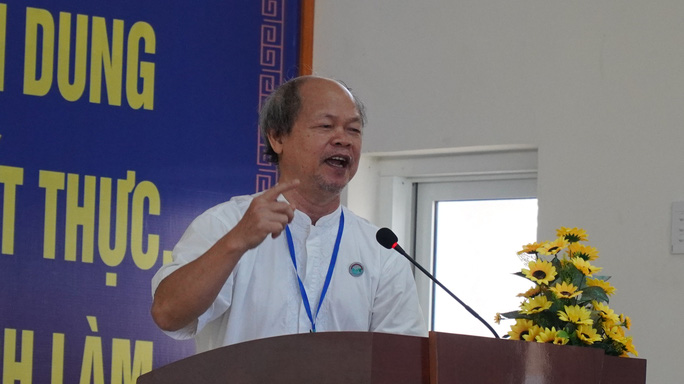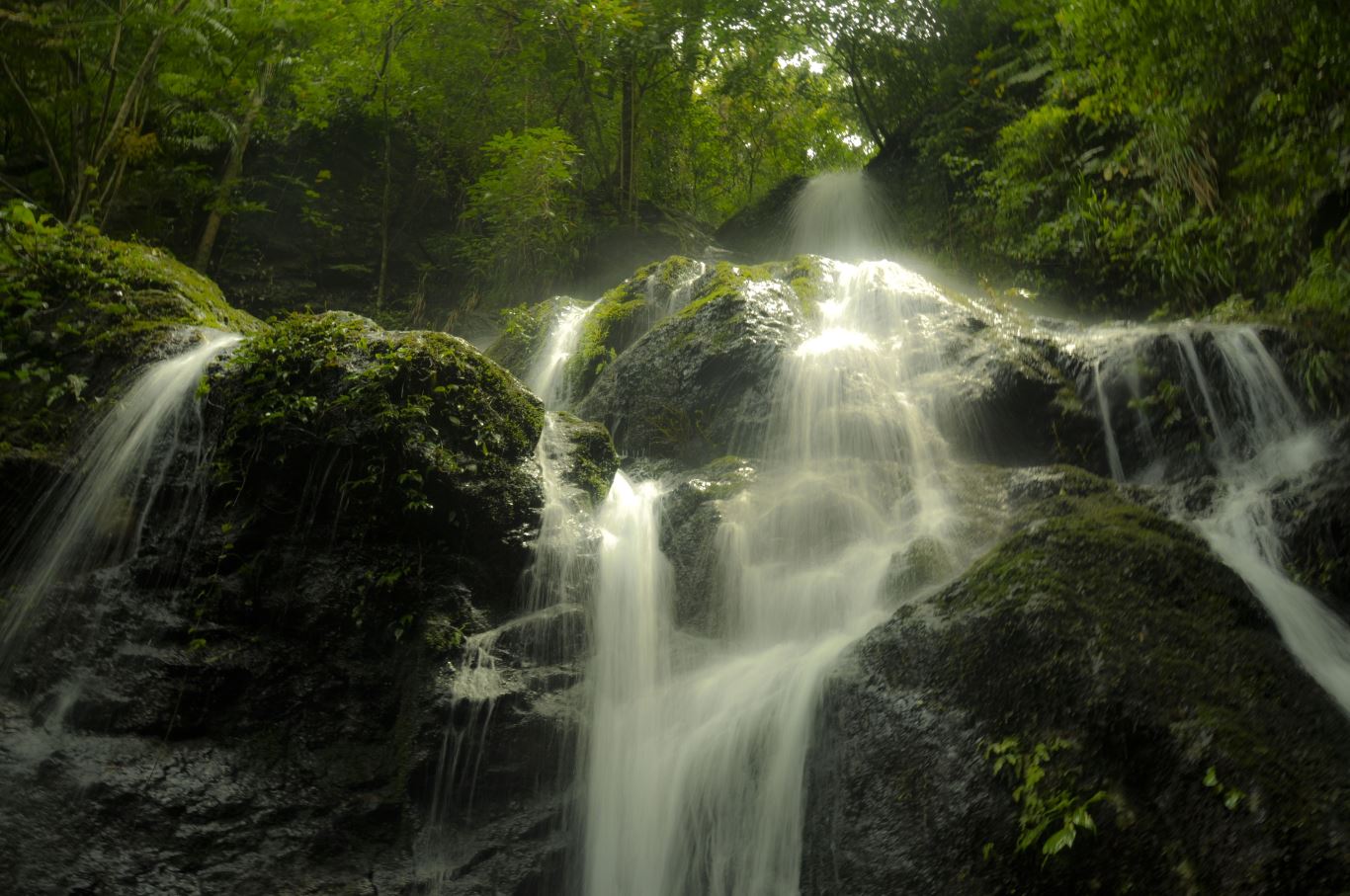

10/01/2022
On September 15th, 2021, within the framework of the 33rd session of the International Coordinating Council for the UNESCO Human and Biosphere Program held in Nigeria, two biosphere reserves Núi Chúa (Ninh Thuận Province) and Kon Hà Nừng Plateau (Gia Lai Province) of Việt Nam have been recognized in the World Network of Biosphere Reserve (BR). On this occasion, Vietnam Environment Administration Magazine had an interview with Prof. Dr. Nguyễn Hoàng Trí - National President of Vietnam Program on Man and Biosphere (MAB), Vietnam National Committee for MAB about sustainable management of the BRs and orientations for the development of the BR network in the coming time.

Prof. Dr. Nguyễn Hoàng Trí - National Chairman of Vietnam Human and Biosphere Program, Vietnam National Committee for Man and Biosphere (MAB)
VEM: Professor, in order to be recognized in World Network of BRs, what criteria should two BRs of Núi Chúa and Kon Hà Nừng Plateau of Việt Nam meet?
Prof. Dr. Nguyễn Hoàng Trí: Two BRs of Việt Nam as well as 714 BRs of 129 countries currently recognized that must satisfy 7 criteria to become a BR (according to Article 4, The Statutory Framework of the World Network of BR, adopted at the UNESCO General Assembly in 1995, is: (1) It should encompass a mosaic of ecological systems representative of major biogeographic regions, including a gradation of human interventions; (2) It should be of significance for biological diversity conservation; (3) It should provide an opportunity to explore and demonstrate approaches to sustainable development on a regional scale; (4) It should have an appropriate size to serve the three functions of BRs; (5) It should include these functions, through appropriate zonation (recognizing: a legally constituted core area or areas devoted to long-term protection, according to the conservation objectives of the BR, and of sufficient size to meet these objectives; a buffer zone or zones clearly identified an d surrounding or contiguous to the core area or areas, where only activities compatible with the conservation objectives can take place; an outer transition area where sustainable resource management practices are promoted and developed); (6) Organizational arrangements should be provided for the involvement and participation of a suitable range of inter alia public authorities, local communities and private interests in the design and carrying out the functions of a BR; (7) Implementation mechanism for management and conservation accepted by UNESCO (includes: mechanisms to manage human use and activities in the buffer zone or zones; a management policy or plan for the area as a BR; a designated authority or mechanism to implement this policy or plan; programs for research, monitoring, education and training.
Being recognized as a BR has created many opportunities for us to access, apply initiatives and share experiences on natural resource management and sustainable socio-economic development.
BRs in Việt Nam are not only a title recognized by UNESCO but are gradually becoming a model of sustainable socio-economic development of the locality. This is a place of connection between humans and nature, where knowledge accumulated during research can be applied to the conservation and development of present and future societies.
VEM It can be said that, over the past 20 years, Việt Nam has been recognized by UNESCO with a total of 11 BRs, becoming the country with the second largest number of BRs in Southeast Asia. So, what is your assessment after more than 20 years when Việt Nam joins the World Network of UNESCO BRs?
Prof. Dr. Nguyễn Hoàng Trí: More than 20 years ago, Việt Nam had the first BR, Cần Giờ Mangrove Forest. Up to now, Việt Nam has a total of 11 recognized BRs, with a total area of more than 4.1 million hectares, accounting for about 12.1% of the country's total area. This is home to more than 2.3 million people and is also an area with extremely rich natural resources and biodiversity values.
Looking back at the process of forming and developing the World Network of BRs in Việt Nam over the past 20 years, the BRs have an important meaning, demonstrating the implementation of the directives and guidelines of the Party and State about nature and biodiversity conservation, response to climate change (CC). The development of the network of BRs is also in line with the trend of promoting cooperation between Việt Nam and UNESCO in the fields of heritage, global geopark and BR, towards sustainable development.
Over the past time, there have been many efforts of the BRs to implement the LIMA Strategy and Action Plan of the Human and Biosphere Program to improve livelihoods, BD conservation, environmental protection, and sustainable management of natural resources on the basis of respecting and maintaining traditional cultural values and identities. These efforts have made important contributions to the realization of the objectives of the National Strategy on Sustainable Development, Environmental Protection, and Biodiversity as well as international commitments on environment to which Việt Nam is a member.
The results from the development and management of BRs in Việt Nam have been clearly demonstrated. Up to now, BR is not only a title recognized by UNESCO but is gradually becoming a model of sustainable socio-economic development of the locality. BRs are not only intended to conserve nature and biodiversity, but also serve as a connection between humans and nature, where knowledge accumulated during research can be applied to the conservation and development of present and future societies.
Việt Nam has taken advantage of UNESCO's knowledge, experience and resources to develop BRs in areas such as strengthening the legal corridor, strengthening management capacity, strengthening institutions and apparatus, and improving awareness and encouragement of community participation; Building and expanding the network of activities of Vietnam's BRs with other BRs in the region and the world, as well as a network of experts in the field of BRs...
At the same time, Việt Nam also actively participates and contributes to initiatives, operating models... of the World Network of BRs. Currently, Việt Nam is a member of the international MAB - ICC (term of 2017-2021). Some initiatives such as labeling the biosphere (Cát Bà BR, Đồng Nai, Kiên Giang, Tây Nghệ An), applying a green and low-carbon economic model (Cù Lao Chàm BR), reducing waste and do not use disposable plastic products ... highly appreciated by UNESCO.

Kon Hà Nừng Plateau Waterfall (Gia Lai Province)
VEM: In your opinion, what does Vietnam need to do to develop the BR in the coming time?
Prof. Dr. Nguyễn Hoàng Trí: Most of the protected areas and BRs are located in areas with high poverty rates, so achieving the goal of both conservation and economic development encounters many difficulties. In addition, other barriers such as lacking of a common framework to implement integrated solutions in sustainable development; the organization and coordination of the participation of stakeholders in the BR are still not effective; the capacity for planning on the basis of landscape approach is not effective.
Therefore, the work of biodiversity conservation and the development of the world network of BRs needs to mobilize the participation of many ministries/sectors, especially localities that own the BR, national and international conservation organizations; thereby contributing to the conservation of natural ecosystems, endangered and rare wild species, and protection of the biodiversity in Việt Nam and the world.
At the same time, countries need to properly implement the MAB Strategy 2015 - 2025 and the Lima Action Plan 2016-2025 to achieve both conservation and economic development’s objectives.
VEM: Currently, the Ministry of Natural Resources and Environment (MONRE) is collecting opinions to develop the Draft National Strategy on Biodiversity to 2030, with a vision to 2050, on this occasion, what suggestions do you have on this content?
Prof. Dr. Nguyễn Hoàng Trí: The MONRE is organizing consultations to develop the Draft National Strategy on Biodiversity to 2030, with a vision to 2025. Therefore, I would like to suggest to well implement the motto "conservation for development and development for the sake of conservation” in all recognized and unrecognized BRs. Because we cannot stop development for conservation, nor can we stop conservation for development, so it is necessary to develop an economy based on conservation. Where reputation and efficiency are preserved, that is the brand for economic development. Images of Cát Bà langur, Đồng Nai bison, Cù Lao Chàm snails ... enter the minds of tourists - conservation messages on product labels add value to the commodity chain in the process of sustainable development of the country
VEM: Thank you Professor.
Nam Hung
(Source: Vietnam Environment Administration Magazine, English Edition IV-2021)